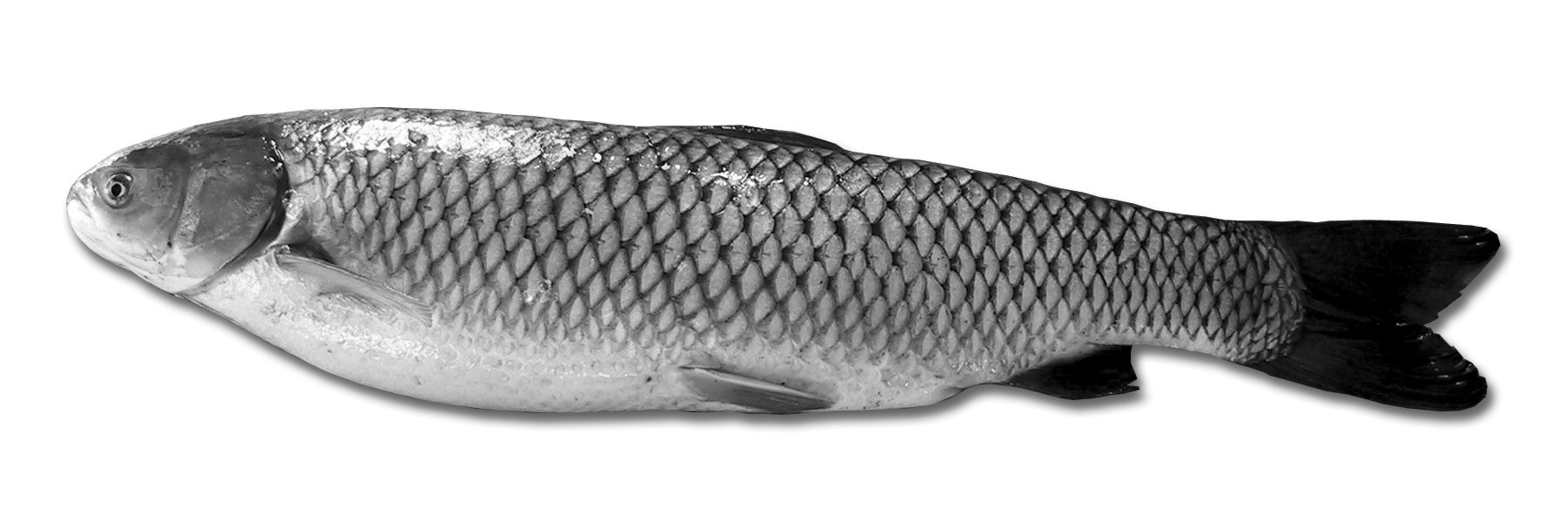Fish & Water

Learn recommendations for weed management and tips for preventing weed infestation. Also included are a table of recommended weed species that can be controlled with grass carp and illustrated instructions for constructing a fish fence or grass carp barrier.
Controlling vegetation in ponds is critical to good management. Too much vegetation interferes with fishing, swimming, and boating. Nutrients that could
be stimulating algae, which effectively support fish production, are used by weedy plants. Thick beds of weeds can cause oxygen depletion, leading to fish kills. Weeds also interfere with feeding by largemouth bass, reducing their growth rate. In large reservoirs, about 20 percent weed coverage has a positive effect on fish reproduction and growth. Because ponds are shallow, the presence of a few weeds can quickly turn into an overgrowth of plants.
Weed management involves several techniques. It is often tempting to seek a quick fix to any weed problem. While herbicides may seem to be the high-tech answer, they should be the last choice if less expensive, more long-lasting methods fail. First, work to prevent weed infestations (table 1) and, if necessary, use biological methods to provide long-lasting, environmentally friendly control.
Table 1. Tips for Preventing Weed Infestations
| Build ponds with edges that drop quickly to 3 feet in depth. |
| Practice good fertilization techniques. |
| Be careful not to introduce weeds to the pond (boat trailers, aquariums, aquatic gardens, etc.). |
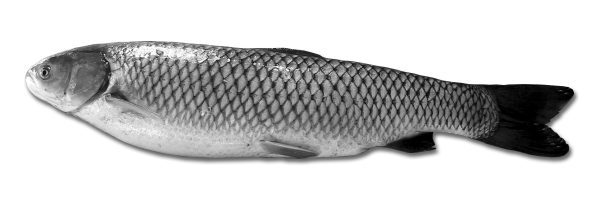
Figure 1. Grass carp or white amur (Ctenopharyngodon idella)
The grass carp or white amur (Ctenopharyngodon idella) is one of the best and most commonly used biological control agents used in ponds (figure 1). This large minnow is native to large rivers in Russia and China. It was imported into the United States in 1963 for aquatic weed control and as a food product. Unlike the common carp (Cyprinus carpio), which is also native to Asia, grass carp do not muddy the water of ponds by feeding in the sediment. As their name implies, grass carp eat vegetation. They can eat two to three times their own weight in aquatic plants each week, and they can gain 5 to 10 pounds in a single year. When properly stocked in ponds, the grass carp can control many problem weeds, but they cannot control all weeds. The grass carp’s soft, fleshy lips and no teeth prevent it from biting off chunks of vegetation the way a horse would crop off grass (figure 2). Instead, grass carp must suck weeds into their throats where they grind the material with tough, bony plates. Only soft-stemmed plants with small leaves are routinely eaten by grass carp. When stocked at high densities, grass carp will sometimes control less preferred vegetation as they eliminate other more attractive types.
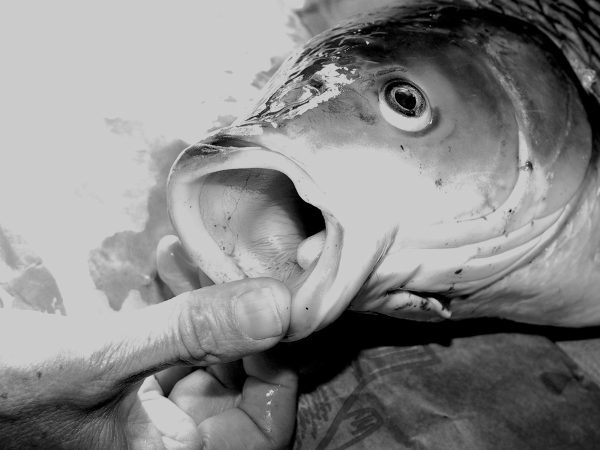
Figure 2. The mouth of a grass carp. Notice the lack of teeth.
Grass carp do not reproduce in ponds. They are native to large rivers in Asia and require flowing water to reproduce. It is unlikely that they would even release eggs in the standing water of a pond, but, if they did, the eggs would sink to the bottom and suffocate. While the many dams on Alabama’s major rivers may have resulted in the decline of some of our native fishes, these same dams may also have prevented grass carp from reproducing in the wild. The still waters of reservoirs may have killed the eggs of the grass carp. In the upper Mississippi River and the Missouri River, grass carp have established reproducing populations in the wild. These fish have destroyed many native plant beds in these rivers. Voracious grass carp are capable of doing great damage to wetlands. It is this concern that has led most states to pass laws dictating strict control of the stocking of grass carp. These states require a permit for the possession of grass carp and certification that all grass carp stocked be sterile triploids. There are no restrictions for the stocking of grass carp in private water in Alabama.
Table 2. Pond Plants and Potential Control with Grass Carp
| Control | Species of Plant | Stocking Recommendation |
|---|---|---|
| Easily controlled | Hydrilla, elodea, najas, bladderwort, egeria, potamogeton | Stock at standard rate. Control is usually within one season except with severe problems. |
| Controlled with difficulty | Water milfoil (parrot feather, Eurasian, water milfoil, etc.), slender spikerush, red ludwigia | Stock at 1 to 2 times standard rate. Control may take more than one season. |
| Controlled with extreme stocking rates | Filamentous algae (Lyngbya, Pitophora, etc.) | Stock at 25 to 50 per acre. |
| Not usually controlled with grass carp | Cattails, alligator weed, duckweed, watermeal, watershield, American lotus, waterlillies, willow, water primrose, water lettuce, water hyacinth | Use other control measures and stock grass carp at standard rates. Grass carp will help prevent other weeds from replacing these, plus they will sometimes suppress growth of even these resistant forms by eating the young shoots. |
Control Methods
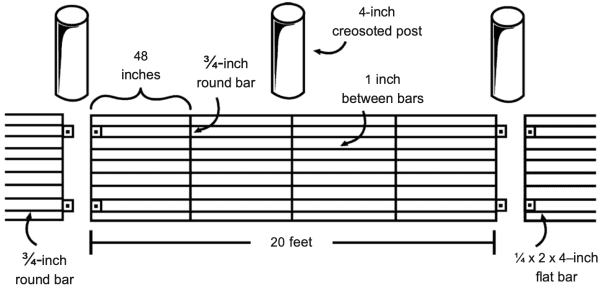
Figure 3. The spillway barrier should be firmly anchored using steel or creosoted wood posts in concrete.
Because the grass carp is a fish native to large rivers, it is attracted to flowing water. During periods of high flow, grass carp will leave a pond through the emergency spillway. This problem can be reduced by constructing a barrier or fish fence across the spillway. This barrier should be constructed with approximately 1-inch spaces between horizontal bars (figure 3).
Construction of this type will reduce the amount of debris that collects on the barrier although sticks, leaves, and other materials can still cause clogging. When clogged, water will back up and flow over the top of the barrier. For this reason, never build a barrier to the height of the dam. It is better to lose grass carp through the spillway than to risk having water go over the crest of the dam causing the structure to fail.
When stocked at recommended rates, grass carp do not interfere with other fishes nor do they interfere with angling. They can be caught with some difficulty on a hook and line using worms, grass, catfish pellets, or small dough balls as bait. Grass carp are one of the most cultured fish species in the world, produced primarily as a food fish and not for weed control. Grass carp have small bones in their flesh that can be removed by proper dressing. Their firm and flaky flesh has a good flavor.
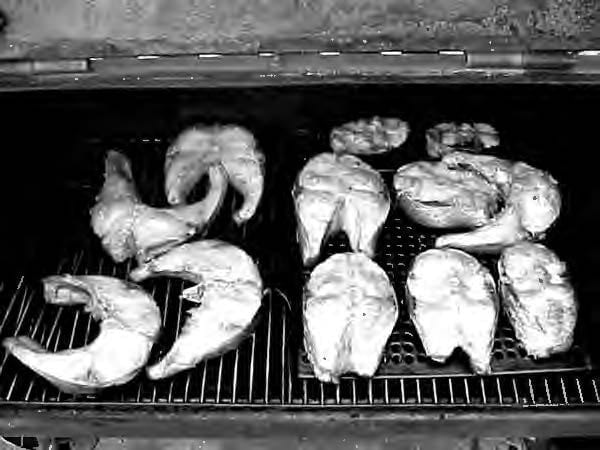
Figure 4. Grass carp steaks are suitable for grilling.
Grass carp can be prepared as either fillets or steaks. When prepared as steaks, the bones are left in the meat while cooking (figure 4). When filleted, y-shaped bones extend along the length of the fish into the meat. Don’t chop grass carp the way you would a boneless fillet because this would break the bones into many difficult- to-remove pieces. Use a sharp knife to carefully cut the flesh into portion-sized pieces. When you feel resistance when cutting through the meat, angle away from the bone to avoid cutting it. After cooking, the steaks or fillets can be broken to expose any bones. Grass carp is suitable for any recipe calling for firm, white, flaky fish. This includes grilling, frying like catfish, or more exotic approaches such as gumbos, court bouillon, or Asian curry. Grass carp are especially good smoked.
Grass Carp Marinade for Smoked and Grilled Steaks and Fillets
- 1 quart water
- Salt (1⁄4 cup for smoked carp; 3 tablespoons for grilled carp)
- 2 tablespoons soy sauce
- 1⁄2 teaspoon lemon or lime juice
- Your favorite spices (onion, garlic, pepper, etc.) to taste
For grilled grass carp: Cover fillets or steaks with mixture for 8 to 12 hours in refrigerator. Grill at high heat until flaky.
For smoked grass carp: Smoke fillets or steaks using indirect heat (180 degrees F) for at least 4 hours until flaky.
The cooked fish can be eaten immediately or used cold in salads and even paté.
Sources of Grass Carp
Adult grass carp spawn in late spring when the water is warming. Hormone injections force spawning. All sizes are available at any time of the year. For a list of producers in your area, contact your county Alabama Extension agent.
Grass carp are sold by commercial fish dealers across Alabama. It is a federal offense to violate state laws that prohibit the possession, transportation, or sale of grass carp. Many states require special permits to possess or transport this fish. Most states, including the neighboring states Florida, Georgia, and Tennessee, require that grass carp be certified sterile triploids. Fertile grass carp are not illegal in Alabama and can, therefore, be used freely. Before transporting grass carp across state lines, check with the natural resource agencies in all the states you will be crossing to determine the legality of transporting the fish through their states.
Sizes and Numbers to Stock
Table 3 provides recommended grass carp stocking sizes and rates for use in established ponds. These stocking rates are the number of grass carp needed per acre of vegetation that is being controlled. This coverage can be roughly estimated based on areal photographs and a survey of the pond. Dragging a weight across the bottom of the pond might be necessary to determine where submerged weeds are growing. In new or newly renovated ponds, stocking about 5 per total pond surface acre in ponds 5 acres or less and about 3 per acre in larger ponds will help prevent weeds from establishing. Stock larger grass carp (8 to 10 inches) in ponds with established bass populations. Stock smaller fingerlings (2 to 6 inches) only where no predators exist or in newly stocked ponds where the predators are about the same size as the grass carp. Smaller fingerlings can also be stocked in catfish ponds. Grass carp are readily eaten by bass and other predatory fishes.
Table 3. Recommended Stocking Rates Per Acre of Weeds for Grass Carp
| Bass Situation | Slight Degree of Weed Infestation | Moderate Degree of Weed Infestation | Heavy Degree of Weed Infestation |
|---|---|---|---|
| Ponds with bass: Stock large carp, 8 to 12 inches | 5/A | 10 to 15/A | 15 to 50/A |
| Ponds without bass: Stock small carp, 2 to 6 inches | 6 to 8/A | 12 to 18/A | 18 to 50/A |
Expected Weed Control Results
It takes time for grass carp to bring a weed problem under control. Weeds may or may not be controlled by the end of the first growing season. If weeds continue to flourish during the second year, then stock more grass carp. You may need to restock with enough fish to bring the total number in the pond up to the maximum normal recommended rate of 20 fish per acre. For control of difficult weeds, you may need to use herbicides to reduce the problem. Then rely on grass carp to maintain control. In ponds with pelleted feed added to feed for bream and catfish, grass carp will need to be stocked at higher rates because they will tend to eat pellets rather than rely entirely on vegetation.
If the weed you want to control is not a favorite of the grass carp, you may need to try other control methods. For more information, see Extension publication “Weed Management in Lakes and Ponds” (ANR-0048) on the Alabama Extension website.
After the weeds are gone in ponds that are stocked at the maximum rate, about half of the grass carp can be removed. If the grass carp are left in these ponds, the remaining fish will not have enough food. The fish can be selectively harvested by angling, by using a large mesh gill net, by applying 0.10 parts per million of 5 percent rotenone, or by shooting them with a bow and arrow. While grass carp are excellent table fare, it is generally not advisable to eat fish killed with rotenone. Rotenone is a restricted use pesticide and, therefore, requires a pesticide applicator’s permit to be purchased. Contact your county Extension office for instructions for obtaining an applicator’s permit.
Stocking Grass Carp in Catfish Production Ponds
Grass carp can also be used for weed control in catfish production ponds. They will eat some of the catfish feed, but, when stocked at recommended rates, they will not reduce catfish production.
Grass carp are in the catfish ponds only a short time before the catfish are harvested, so more grass carp may be needed to control weeds in the ponds. If the catfish ponds are harvested annually, stock 40 to 50 8-inch fish per acre. Weed control in catfish fingerling ponds may require stocking 50 to 100 8-inch grass carp per acre.
Large grass carp will injure fingerling catfish by thrashing and jumping in the harvesting seines. Workers who harvest catfish in ponds stocked with grass carp can also be injured from jumping grass carp. Make workers aware of this potential danger.
The material in this publication is partially adapted from the following:
- Brunson, M. 2002. Aquatic Weed Control: Using Grass Carp. Information Sheet 1556. Extension Service of Mississippi State University.
- Sutton, D. L. and V. V. Vandiver Jr., 1986. Grass carp, a fish for biological management of hydrilla and other aquatic weeds in Florida. Bulletin 867, University of Florida, Agricultural Experiment Station.
- Jensen, J. J. Spillway barriers for farm ponds. Publication ANR-0326, Alabama Cooperative Extension System, Alabama A&M and Auburn Universities, Alabama.
- Jensen, J. J. Using grass carp for controlling weeds in Alabama ponds. PublicationANR-0452.Alabama Cooperative Extension System. Alabama A&M and Auburn Universities, Alabama.
 Russell A. Wright, Extension Specialist, Associate Professor, Fisheries, Aquaculture, and Aquatic Sciences; and Claude Reeves, former Extension Aquaculturist, both with Auburn University
Russell A. Wright, Extension Specialist, Associate Professor, Fisheries, Aquaculture, and Aquatic Sciences; and Claude Reeves, former Extension Aquaculturist, both with Auburn University
Revised May 2022, Using Grass Carp to Control Weeds in Alabama Ponds, ANR-0452

